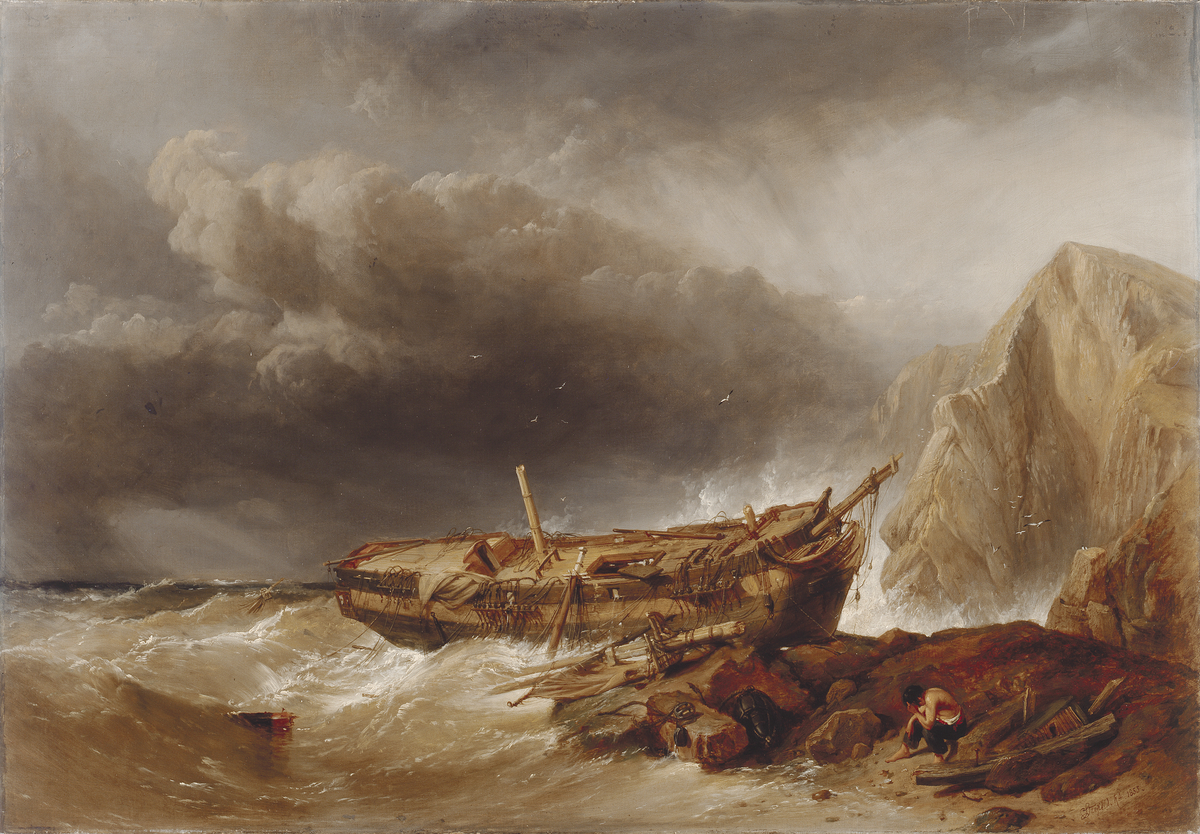The Last of the Crew
Clarkson Frederick Stanfield R.A. 1793 - 1867
Summary
The desolate scene of a shipwreck in a storm, with the boat thrown on to coastal rocks and the sole survivor of the crew recovering on the shore. The prow of the boat has been driven aground with the hull remaining in the sea, being battered by the waves; the broken mast and rigging trail into the water with debris scattered across the rocks and shore. To the left is the dark sea, which stretches to the horizon. A jagged rocky outcrop fills the right edge of the composition with columns of white spray rising from the sea crashing against it. In the right bottom corner, seated on a rock, is the isolated, semi-nude figure of the survivor with his head held in his hands. The sky is filled with dark, oppressive clouds which thin out over the land.
Display Label
Gallery text panel Expressing Passions Romanticism in Focus In 1772, Sir Joshua Reynolds told the Royal Academy that perfect works of art 'cannot express the passions'. Harmony, uniformity and restraint were preferred and there was little room for emotional content. This stress on classical qualities characterised the 1700s, echoing the stability and confidence of Georgian society. Artists of the early 1800s redressed the balance, placing human experience above artistic conventions and injecting greater personal vision into their work. This was largely in response to a more turbulent age of revolution, war and political reform. Uncertainty and rebellion were echoed in art through subjects representing disturbance and in an emphasis on individuality and imagination. The term Romanticism defines these developments. Although there was never an organised movement, there are distinctive hallmarks of Romantic art. These include a more direct response to nature and a new stress on colour as a means of expression. As artists became increasingly guided by their intuition, they grew more independent of patrons' demands: artistic freedom and experiment entered a new age.
Object Name
The Last of the Crew
Creators Name
Date Created
1853
Dimensions
Frame: 113cm x 151cm
Canvas: 83.5cm x 121.5cm
Relined canvas: 84.2cm x 121.8cm
accession number
1920.532
Place of creation
England
Support
canvas
Medium
oil paint
Credit
Dr David Lloyd Roberts bequest, 1920
Legal
© Manchester Art Gallery

